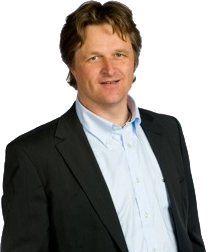Vision Development
Probably the single biggest discovery I made was that you can develop and grow your visionary self. Until I had given it more thought, I was under the impression, like most people, that a powerful vision is a God-given talent, something for the larger-than-life. That’s often our first intuition. But with the development framework I propose, and the specific practices for each dimension, anyone can grow their visionary capacity to significantly higher levels. And if we agree that vision is a critical element of leadership (as virtually all leadership scholars and guru’s do), we benefit from taking a developmental perspective instead or a born-with-or-not view.
Based on my observations (and testing done with hundreds of senior leaders, whom I work with on vision, strategy, and leadership), there are two critical developmental dimensions for growing your visionary capacity:
- Your ability to see things early. The first signs of change often manifest as random noise or faint warning signals, often at the periphery of our attention and far less explicit in their game-changing nature than they are later. Growing your ability to notice these signals early, and recognize their potential impact, is an essential part of raising your visionary capacity.
- Your ability to connect the dots, to create coherence in the future you face and turn it into a “bigger picture” story. This implies constructively and intelligently working through the complexity of the multifaceted and multidimensional future.
The two dimensions are key. They are also independent of one another. Seeing change early is about spotting isolated signals of change on the horizon while connecting the dots is about integrating the larger context, the so-called big picture. Therefore, each dimension warrants its own practices. The fact that they are so different and independent allows us to portray them in a two-by-two (2x2) matrix, and bring out the archetypes of the 4 quadrant that emerge:

- Followers: this type is neither very good at early noticing nor skilled in creating and communicating a coherent story from the various insights he or she has about what the future might bring. This is not to say that Followers don’t have any idea of what the future might bring for their part of the organization or industry. They just don’t have a compelling story or image ready to share when provided an opportunity to ignite others. It’s either absent, poorly developed and unformulated, or all over the place and lacking coherence.
- Trend Hoppers: in the lower right quadrant we find the Trend Hopper, the person who has a well-developed ability to see things early, is very much in tune with what’s on the edge, and is existentially willing to embrace changing realities. But the Trend Hopper isn’t very good at turning early-stage insights into a coherent story that justifies an active strategic pursuit. It’s not in this person’s nature to find an appropriate balance between what could become radically different and what remains essentially the same, in the foreseeable future at least. They run the risk of becoming dogmatic over all the radical changes they are anticipating
- Historians: which brings us to the upper left quadrant, the leaders adept at connecting the dots and spinning a story that makes sense. They like to cite patterns, facts, and figures—ideally in PowerPoint—and marvel at making the road traveled so far look very coherent and intentional. When you listen to them, it all makes sense. But they have their eye trained on the factually true past, not on the imaginative uncertain future. They have a strong thinking preference for consistency and logic, and are therefore less interested in what breaks with coherence (unlike Trend Hoppers). Historians also risk becoming, or being perceived as, cynics, since they can very quickly point out to you why your great idea is not going to work.
- True visionaries: in the top right quadrant we find the visionary, the one who seeks risks by seeing things early, and balances that with responsibility by artfully connecting the dots. The visionary would not overoptimistically jump on every fad that passes by, as our Trend Hopper risks. Nor would he become a naysayer and launch into the Historian mode. The visionary takes a mindful, future-oriented perspective, balancing the need for a compelling future with the awareness of the inherent dangers of becoming dogmatic and overoptimistic.

